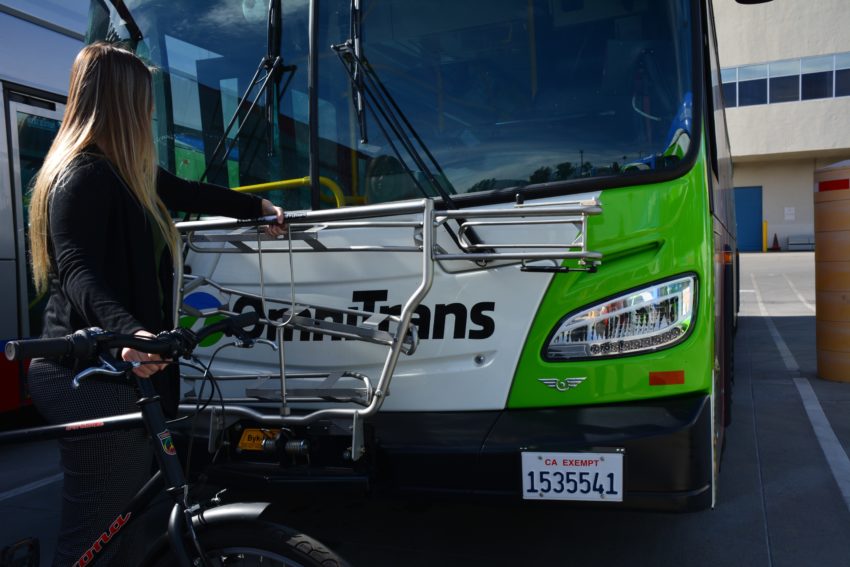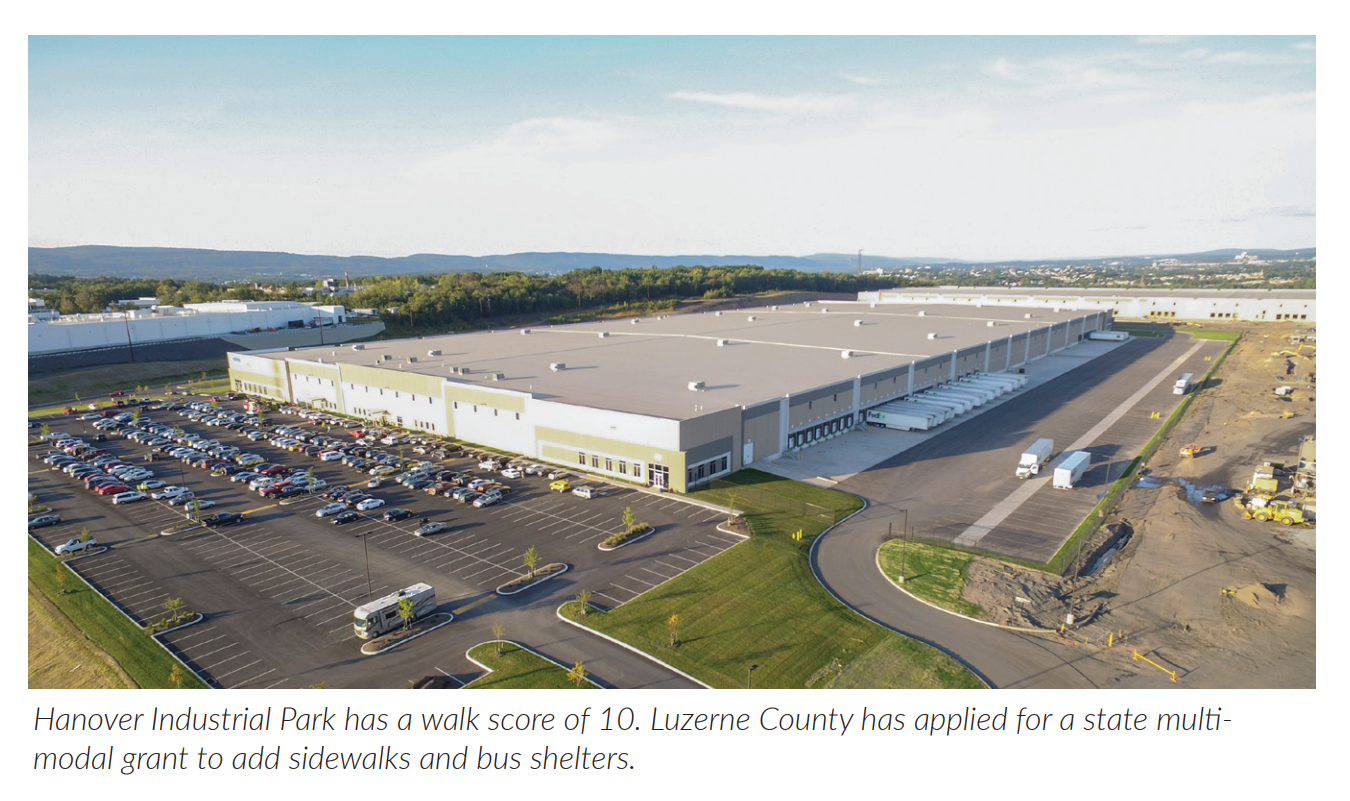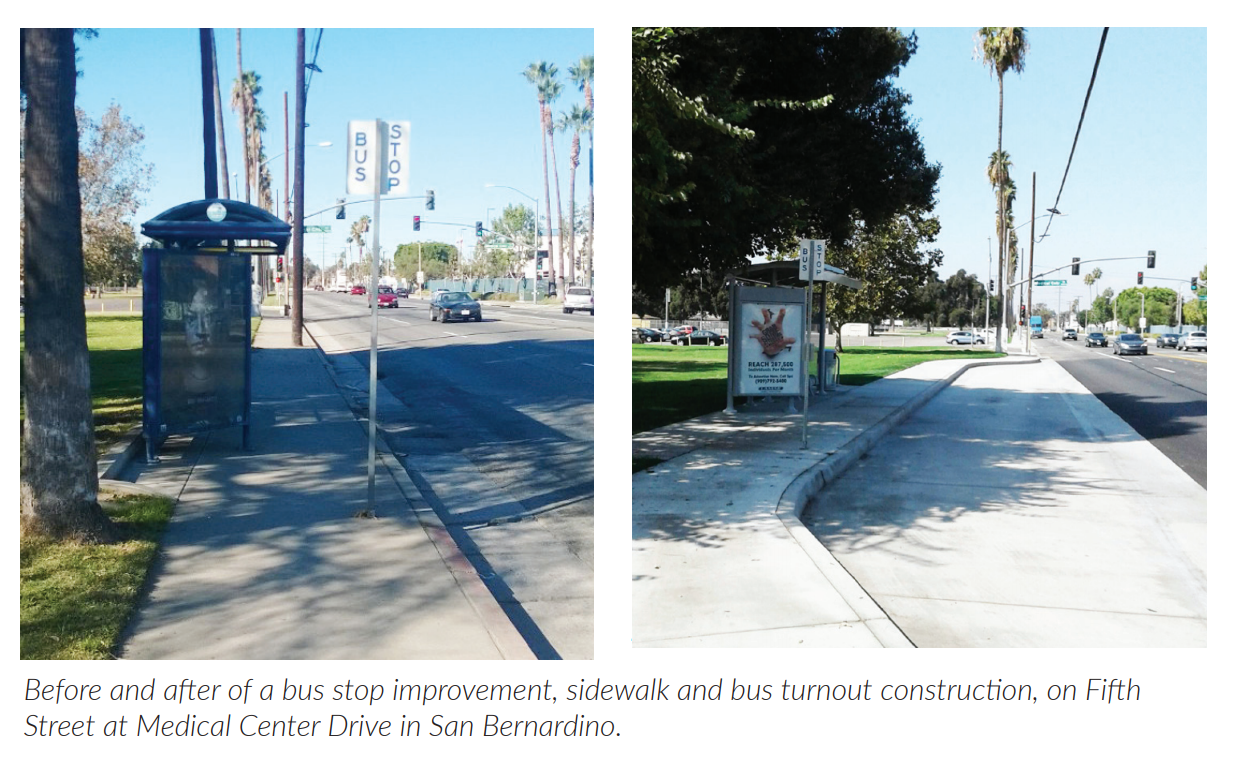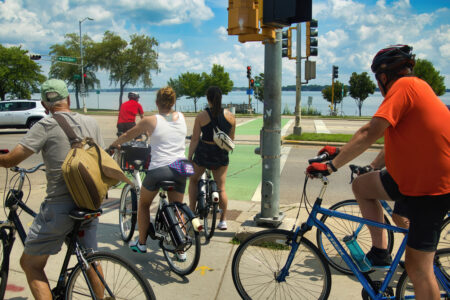
Share On Social!
Transit-rich, walkable communities strengthen the local economy, create opportunities for Latino and other vulnerable residents, and enhance community resilience.
That’s why America Walks, a nonprofit organization, released four case studies sharing collaborative efforts to improve safety, walkability, and access to transit in four communities across the country. This is another effort in their Transit-Walkability Collaborative, which was established in 2017 by America Walks and eight other organizations.
As part of the case study series, America Walks recognized: Nashville, Tennessee (10.4% Latino); Wilkes-Barre, Pennsylvania (17.3%); Hartford, Connecticut (44.3%); and San Bernardino, California (64.3%).
Two counties in particular offer valuable insights into inspiring community change and connectivity that bolsters active transportation, while promoting a more healthy, vibrant streetscape.
Luzerne County (Wilkes-Barre), Pennsylvania (11.8% Latino)
Seeking a solution to the lack of adequate transportation options for those commuting to sprawling suburban industrial parks led Live Well Luzerne (LiveWell) and Diamond City Partnership (DCP) to partner with the Luzerne County Transit Authority (LCTA).
Downtown Wilkes-Barre (17.3% Latino), the county seat, was at one time walkable, with access to residences and businesses.
However, in the mid-twentieth century, giant industrial parks were built outside the city around the regional highway network.

The mismatch in locations of workplaces and workers results in city residents commuting out and county residents commuting in.
Although 40% of citywide jobs are located downtown, 70% of working residents commute to work outside the city. Moreover, the largest single employment center in Northeastern Pennsylvania is located in Wilkes-Barre, yet most employees commute from outside the city.
This is particularly problematic because the region lacks adequate active public transportation networks to connect employees to workplaces. Often, low-income populations are disproportionately burdened by longer commutes and fewer safe options to walk or bike.
“These distribution centers sit on parcels containing buildings that are often up to a million square feet in size,” said Larry Newman, Executive Director of Diamond City Partnership, in a statement included in the study. “So the bus is going to drop you off somewhere . . .in an environment that is the opposite of walkable.”
In 2016, DCP and LiveWell started working with LCTA more intensely. These organizations then began partnering with the local business parks to promote change including:
- LCTA re-evaluated routes and began running van-like shuttle buses in the industrial parks
- Together they installed new bus shelters and sidewalks from drop off points to the buildings.
- LiveWell Luzerne and LCTA applied for and received an America Walks Community Change Grant to conduct bus stop walkability audits
- The groups identified shelters without sidewalks and shelters too close to traffic
- The community began working on traffic calming projects, one-way to two-way conversions, Complete Streets, sidewalk construction, and wayfinding
- They are also looking at intersections with high-crash rates, rethinking mixed-use properties, and addressing street speeds
“I recently heard transit described, at its best, as being a pedestrian accelerator,” Newman said. “When it works that way, transit allows you to get to a new place where you can walk to a whole new range of activities without having to get in a car.”
San Bernardino County, California (53.4% Latino)
Infrequent transit service, lack of people-first design, and inadequate late-night service led the San Bernardino County Transportation Authority (SBCTA) to establish the San Bernardino County Active Transportation Network.
Without walkable transit stops, public transportation quickly becomes unrealistic as a viable mode. That is a problem considering 91% of the county’s transit users walk to the bus stop.
Ultimately, political roadblocks prevented transit-walkability efforts, and the region lacked a Complete Streets practice. Transit and walkability advocates needed a network to improve coordination.
So, SBCTA launched the San Bernardino County Active Transportation Network in 2013 to improve safety for biking and walking through infrastructure, advocate for policy changes, promote education initiatives, and improve mode sharing.

The aim was to create a cohesive network to improve coordination for active transportation partners to tackle funding challenges and capitalize on grant opportunities, especially from the state.
Other initiatives included:
- Omnitrans conducted walking audits; documented poor walkability; and made a commitment to meet the needs of its most vulnerable community members
- In conjunction with a new major transit center downtown, Inland Empire Biking Alliance started a pop-up bicycle repair co-op at the transit center to help passengers with bike repairs.
- SBCTA and Omnitrans received federal Active Transportation Program grants for pedestrian and bicycle connectivity projects around different transit stops.
- Omnitrans partnered with the City of Ontario to apply for a state grant to increase frequency of a bus route and purchase buses, transit passes, travel training, bus stop accessibility improvements, shelters, and real-time arrival signage. They received $35 million.
- Omnitrans received another active transportation program grant for walkability improvements to connect to all the stations of a bus-rapid transit line opening in 2023.
“It’s definitely fruitful in terms of partnerships to bring in resources… it helps serve the transit passengers and the public,” said Anna Jaiswal Development Planning Manager for Omnitrans and one of the founding members of the San Bernardino County Active Transportation Network, according to the case study.
Neighboring Riverside County recognized the benefits of the Networks collaboration and received consultation from SBCTA to start something similar.
Read more about these two case studies and the others listed above.
Transit-Walkability Collaborative
The Transit-Walkability Collaborative exists to promote the benefits of walkable, transit-rich communities; bring together transit and walkability advocates at the local, state, and national level; and identify and implement programs and policies that simultaneously expand walkability and transit services in communities across the U.S.
“Walkability and transit advocacy complement each other and accomplish common goals neither can achieve on its own,” said Ian Thomas, State and Local Program Director with America Walks and coordinator of the Collaborative. “By ensuring a high level of service for both walking and public transport, we stimulate mutually-reinforcing community benefits that help address a range of social problems – from health to economics to quality of life.”
The following nine founding members established the group:
- America Walks, Center for Transportation Excellence
- American Public Transportation Association
- National Association of Public Transportation Advocates
- Victoria Transport Policy Institute
- Circulate San Diego
- WalkDenver
- Health by Design/Indiana Citizens’ Alliance for Transit
- WalkBoston
Each organization signed onto a shared Statement of Purpose.
Watch a webinar exploring the work of the Collaborative and the benefits that exist when walking and transit advocates come together.
Sign up to receive their emails and spread the word about the importance of integrating transit and walkability.
By The Numbers
27
percent
of Latinos rely on public transit (compared to 14% of whites).



